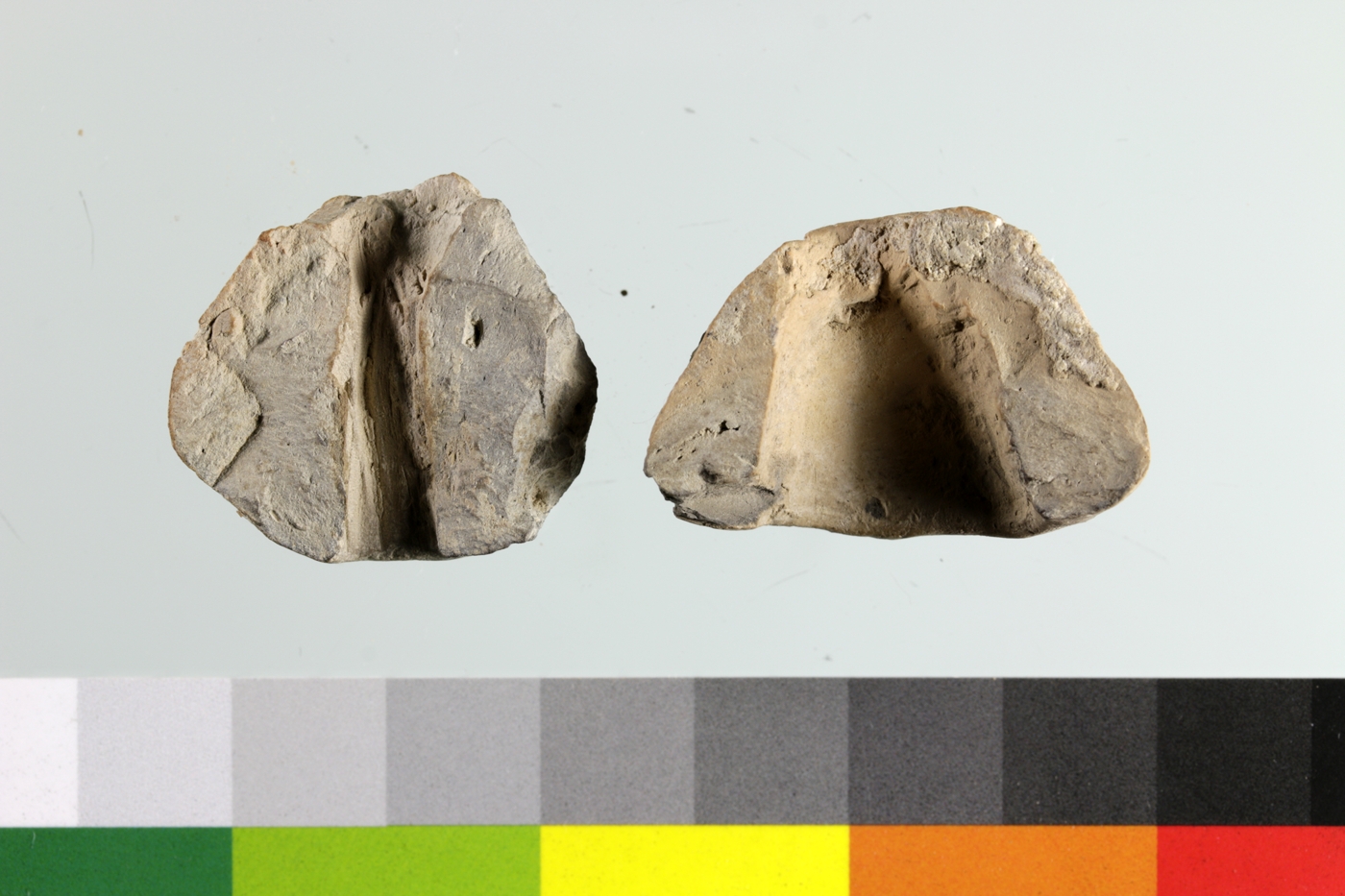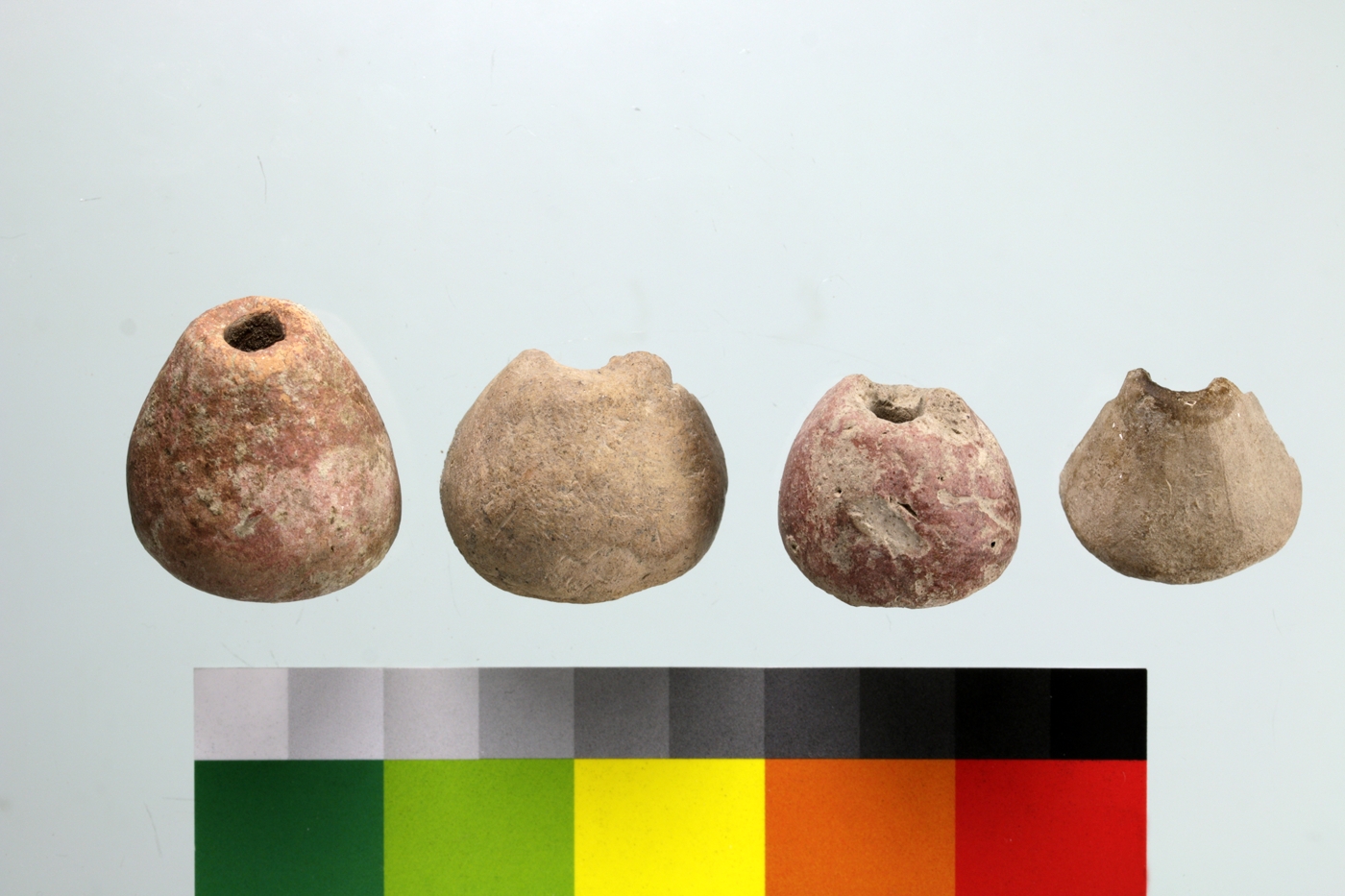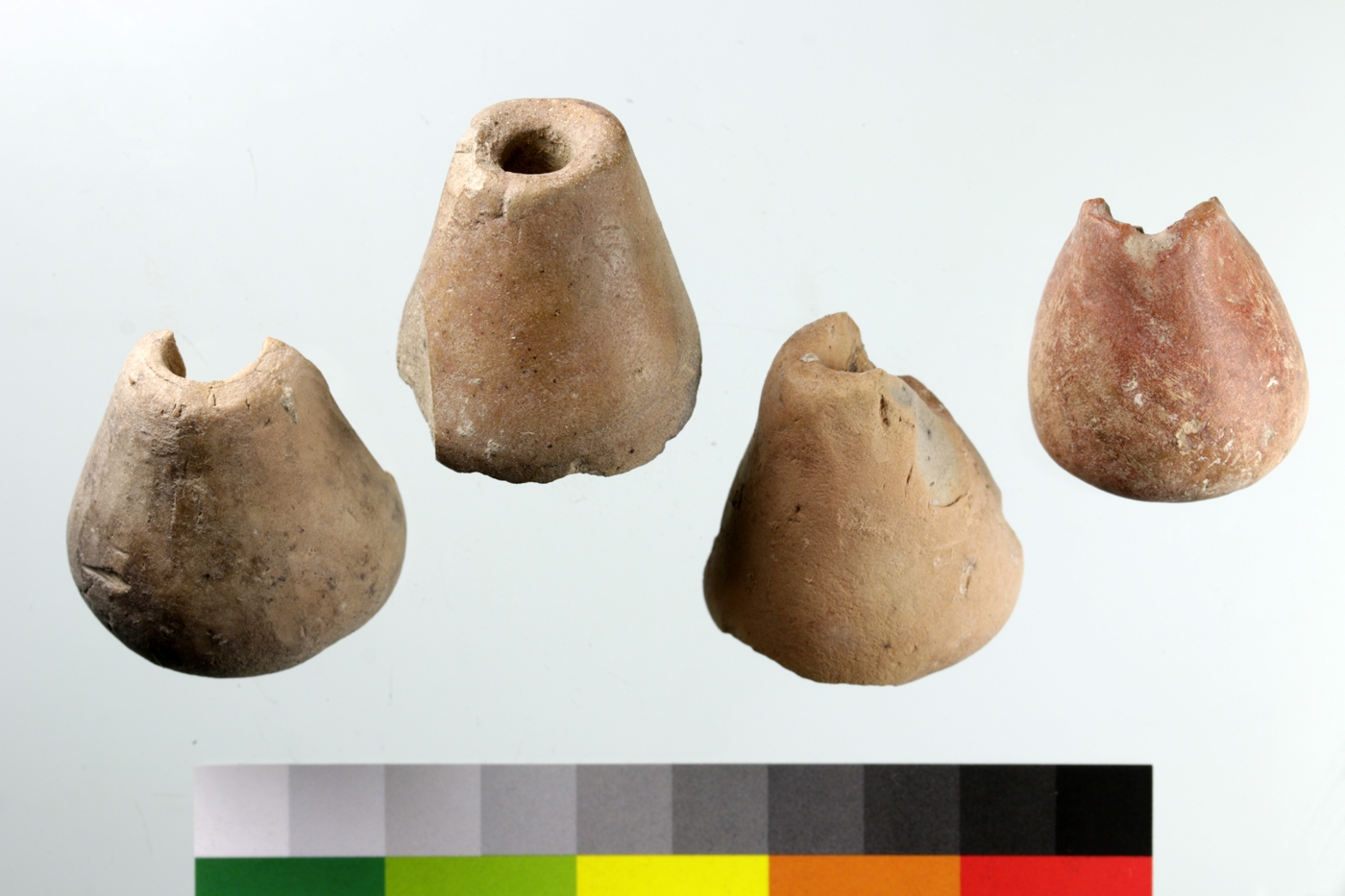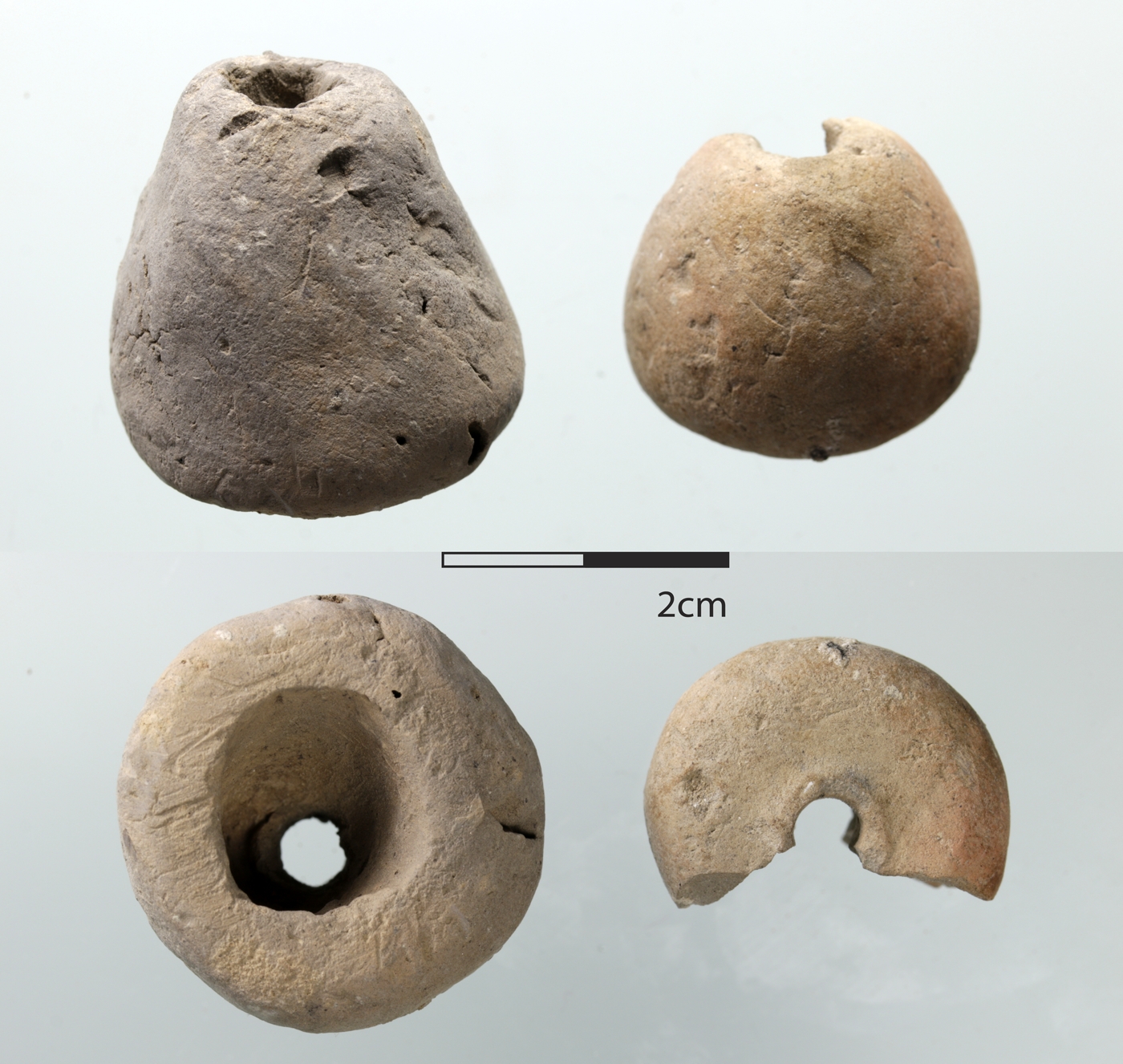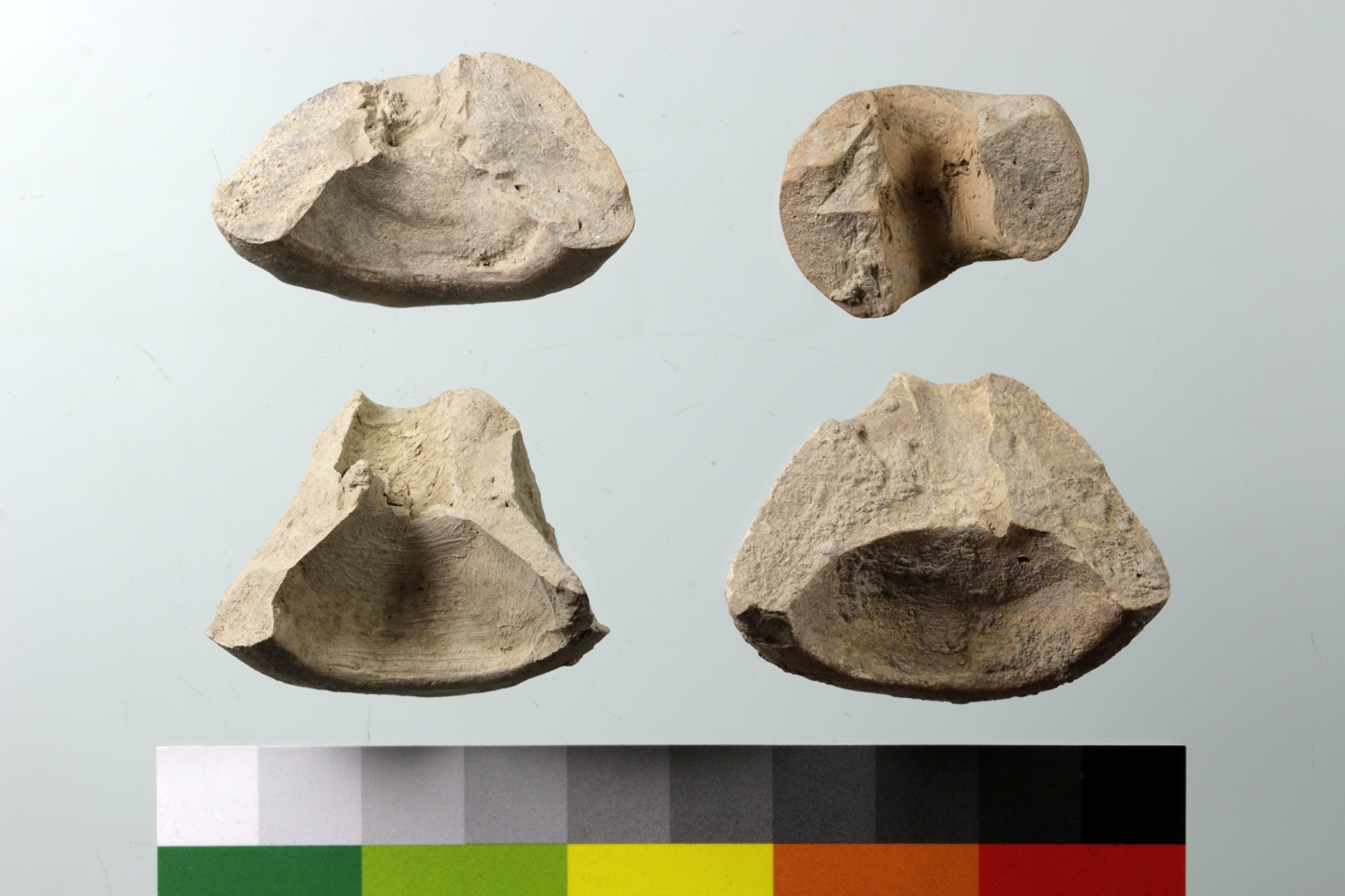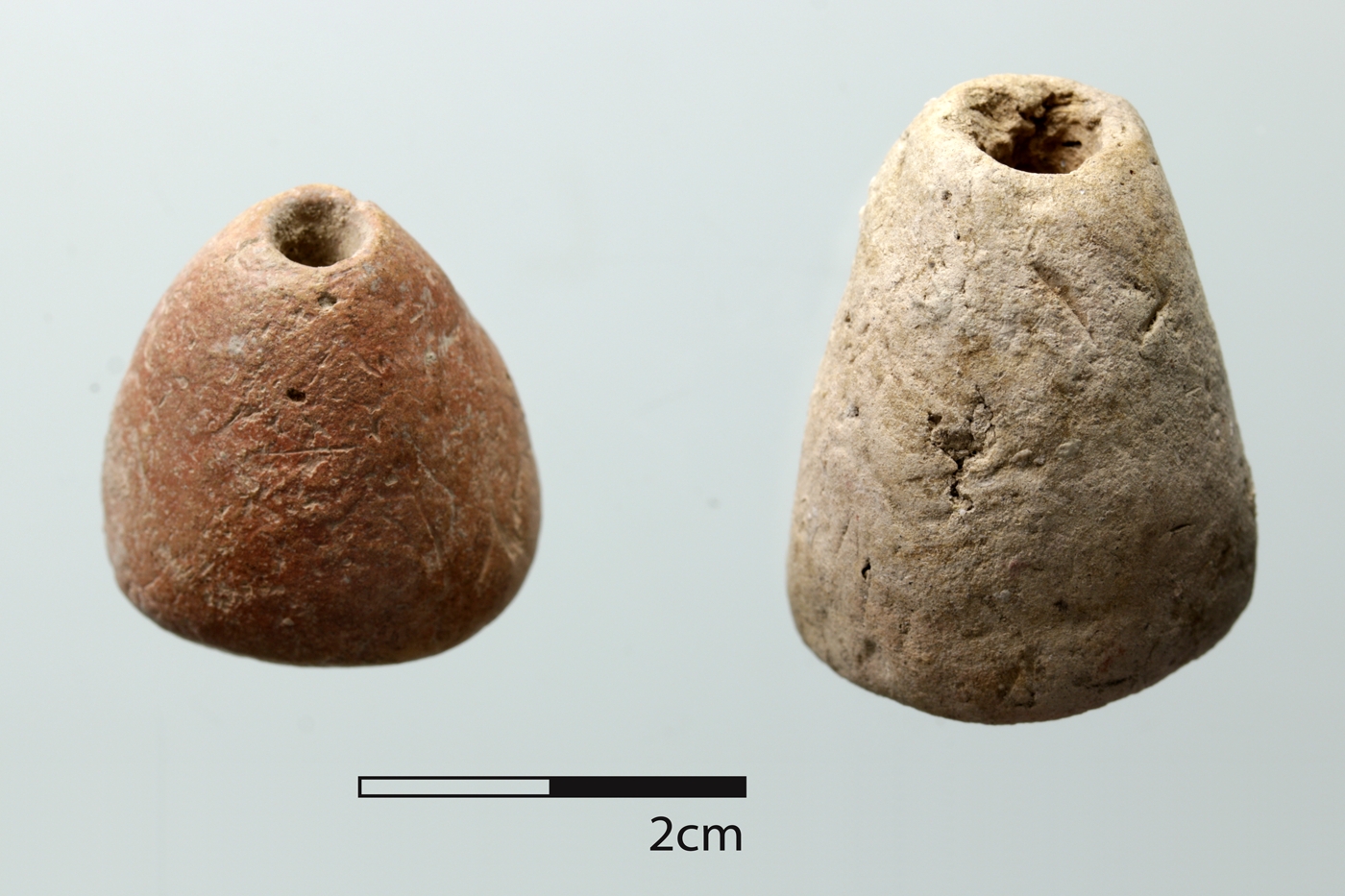Spindle Whorls
Spindle whorls are objects the primary function of which was thread production. By means of their weight, the rotation of a spindle is increased, permitting the attached fibers to be twisted as desired.
In Monjukli Depe a total of 579 spindle whorls and fragments thereof were recovered. They can be divided into simple conical whorls, conical whorls with concave bases, and biconical whorls.
Only 11 biconical forms are attested. By far the largest proportion of the whorls consist of simple conical shapes. All spindle whorls were made of clay, which was locally available. The variability in color of the objects is based on the differing temperatures to which the whorls were subjected. The colors vary from beige (unfired to only lightly fired) to red or black (fired in an oxidizing or reducing atmosphere). Some objects have a colored slip, however, the majority of the pieces are undecorated.
Spindle whorls were found on floors inside buildings as well as in refuse deposits, for example in large middens and abandoned houses. In other words, the whorls were apparently left behind in various places. It is striking that a large number of whorls were discarded intact, which indicates that these objects were not thought to hold a high value in Monjukli Depe.
Apart from a single spindle whorl found in the Neolithic levels at Monjukli Depe, all whorls recovered in the excavations come from the Meana Horizon. The one piece from a Neolithic context shows that this technology and thus the potential for thread and textile production was already known in the early 6th mill. BCE in the Kopet Dag piedmont.
Only indirect hints of the types of fibers spun are available. The age profiles of the slaughtered sheep show a preference for meat and milk rather than wool. There is, however, an almost complete absence of archaeobotanical evidence for plants such as flax that could have been used for their fibers.
For further reading, see Keßeler in Pollock et al. (eds.) 2019; Keßeler 2016.
